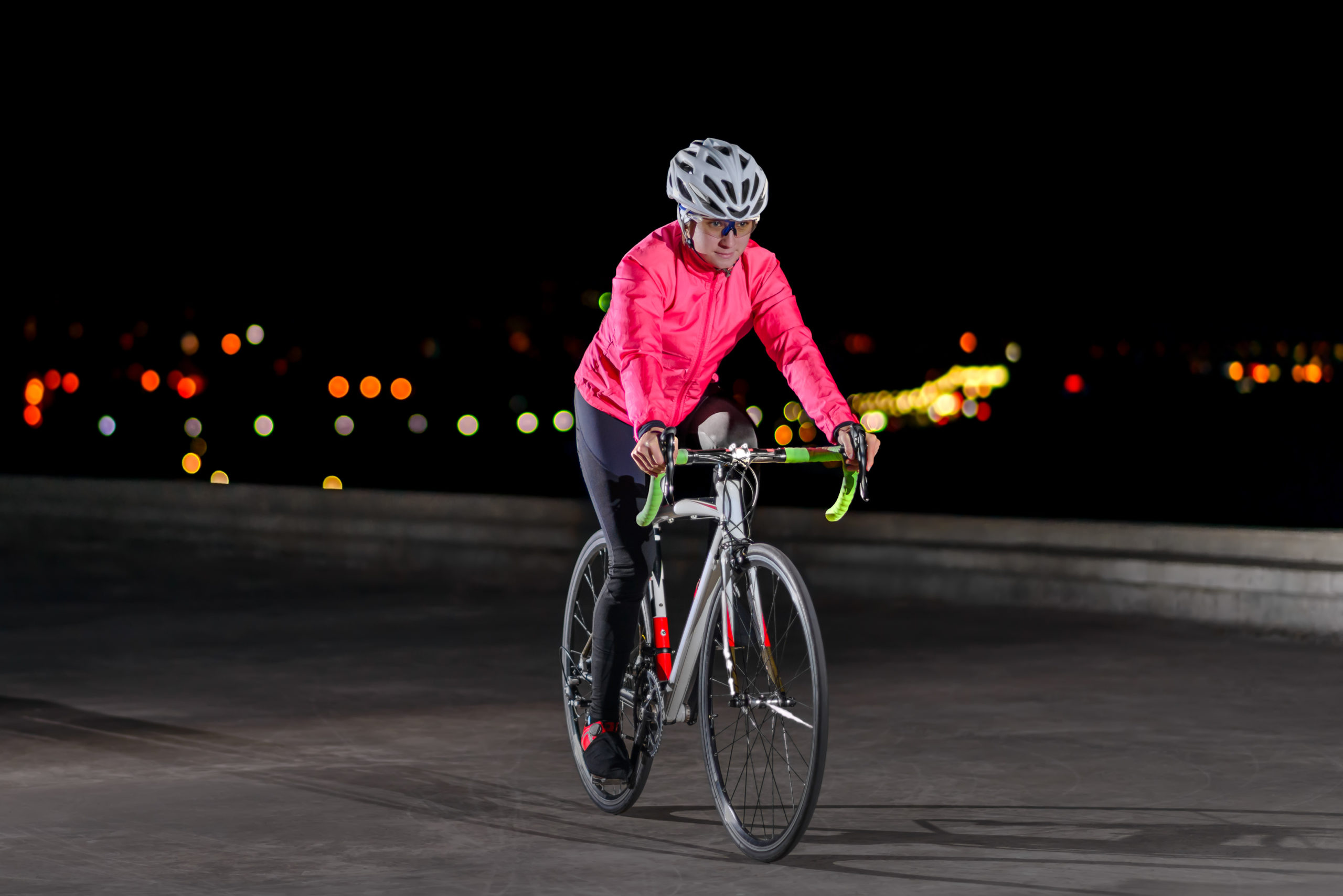
With these tips, there’s no need to take your workout indoors due to more limited daylight.
These days, it’s more difficult to get in an outdoor workout during daylight hours because there’s simply fewer daylight hours to choose from. But does that mean you should take your workout indoors or can you still enjoy an outdoor sweat sesh even in the dark?
There’s no doubt that darkness increases your chance of accident or injury because it’s harder for you to see obstacles and it’s also harder for others to see you. But there’s no need to give up the joys of exercising outdoors just because you can’t get a workout in when it’s light outside. Just take a few extra precautions to stay safer and you should be good to go.
Here are 7 tips for exercising more safely when it’s dark outside:
-
-
- Wear bright, reflective clothing. Choose bright colors or white so you’re more visible. Some athletic clothing also comes with built-in reflective strips. You can wear a reflective vest or affix glow-in-the-dark stickers to your clothing or shoes to increase visibility. Reflective or light-up bands worn on your arms and legs make you more noticeable because they indicate to others that you’re moving.
- Use a light. If you’re on a bicycle, it should be equipped with front and back lights. If you’re running or walking, you can attach blinking lights to your body, wear a headlamp or carry a flashlight. This will not only make you more visible to others, but will help you see the path in front of you more clearly.
- Move in the right direction. Run or walk against traffic, but if you’re on a bicycle, go with the flow of traffic.
- Know where you’re going. Heading out on a new trail or in an unfamiliar neighborhood is best left for daylight hours when it’s easier to see where you’re going. Stick with routes you’re comfortable with and where you know what to expect (like uneven sidewalks or a sharp turn in the road).
- Be aware of your surroundings. When your vision is compromised, it’s important to be more aware of what’s going on around you using your other senses. So skip the headphones and stay off your phone.
- Don’t go out alone. There’s safety in numbers and this is especially true when it’s dark outside. If you do head out solo, stick to more well-traveled routes rather than those where you’re truly alone.
- Let others know where you’re going. It’s always a good idea to let people know where you’re headed. Tell someone your route and when you expect to be back. Always carry ID and keep your cell phone with you at all times.
-
Copyright 2016-2022 © Baldwin Publishing, Inc. All rights reserved.
Health eCooking® is a registered trademark of Baldwin Publishing, Inc. Cook eKitchen™ is a designated trademark of Baldwin Publishing, Inc. Any duplication or distribution of the information contained herein without the express approval of Baldwin Publishing, Inc. is strictly prohibited.
Date Last Reviewed: September 1, 2022
Editorial Review: Andrea Cohen, Editorial Director, Baldwin Publishing, Inc. Contact Editor
Medical Review: Andrew Overman, DPT, MS, COMT, CSCS
Learn more about Baldwin Publishing Inc. editorial policy, privacy policy, ADA compliance and sponsorship policy.
No information provided by Baldwin Publishing, Inc. in any article is a substitute for medical advice or treatment for any medical condition. Baldwin Publishing, Inc. strongly suggests that you use this information in consultation with your doctor or other health professional. Use or viewing of any Baldwin Publishing, Inc. article signifies your understanding and agreement to the disclaimer and acceptance of these terms of use.